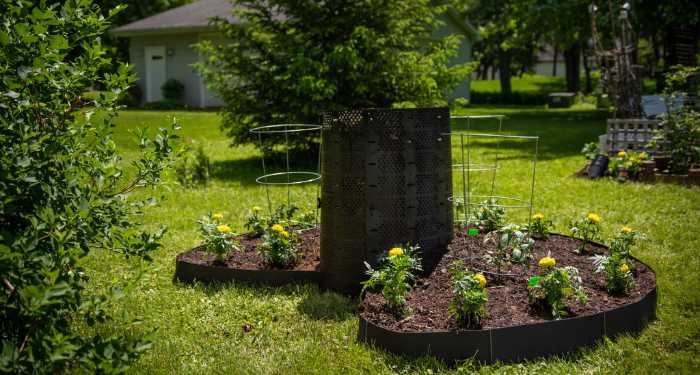How to Elevate Your Garden: The Benefits of Raised-Bed Gardening
Posted November 5, 2021Raised-bed gardening is not a new concept, yet many gardeners are missing out on its many benefits. As the name suggests, raised-bed gardening involves growing plants in soil contained above the ground. Using a raised garden bed gives you control over the growing environment, ensuring a more successful yield.
Whether you are a beginner or master gardener, this gardening method is worth digging into a bit further. Here are five benefits of using a raised garden bed:
No Tilling
Not only is tilling time-consuming and laborious, it can also be detrimental to the long-term health of your soil. While tilling breaks up compacted or clay soils, helping to incorporate oxygen and organic material necessary for healthy growing conditions, over-tilling destroys the natural soil structure, making it more prone to compaction and nutrient depletion. As you till the soil, you also expose a greater number of soil particles to air and sunlight, reducing the soil’s ability to retain moisture.
When you grow plants in a raised garden bed, no tilling is necessary. This gardening method allows you to build your garden above the earth using your preferred soil mix, so the native soil is not a factor.
Improved Soil Quality
The soil’s structure directly affects the health of plants. Poor soil conditions can lead to nutrient deficiencies and stunted growth. A raised garden bed allows you to grow in poor-soil areas that would otherwise not support healthy plant life. Too much clay or sand? This is no problem with raised garden beds since you can use your desired soil mix.
Raised garden beds also prevent soil erosion from rain and routine watering. The raised sides of the garden bed act as a barrier, preventing the loose soil from washing away.
Better control of drainage & water retention
 Areas with clay soil tend to drain poorly, leaving your garden saturated. Conversely, sandy soils drain too quickly, making it necessary to water your garden more often. Neither of these scenarios is ideal, but with a raised garden bed, you have control over the composition of your soil. Depending on your climate, you can adjust your soil to optimize water retention and drainage.
Areas with clay soil tend to drain poorly, leaving your garden saturated. Conversely, sandy soils drain too quickly, making it necessary to water your garden more often. Neither of these scenarios is ideal, but with a raised garden bed, you have control over the composition of your soil. Depending on your climate, you can adjust your soil to optimize water retention and drainage.
Incorporating compost into your soil significantly improves water retention because compost can hold 20 times its weight in water. Composting also helps divert organic waste from landfills, making it an environmentally friendly solution for households. The GEOBIN Composter turns food and yard waste into nutrient-dense compost to add to your raised garden bed, saving money and protecting the environment.
Less Soil Compaction
Raised garden beds allow you to grow more plants in a smaller area, which is great for those with limited outdoor space. Unlike in-ground gardens, you can easily design your raised bed to make plants accessible without walking through the planting area. Eliminating foot traffic for maintenance means there will be less damaging soil compaction.
For plants, compacted soil is like a pile of bricks. These conditions prevent the roots from growing deep into the soil, negatively affecting the plant’s ability to absorb nutrients. Compacted soil also makes it difficult for plants to receive the water necessary for growth, causing them to suffocate.
Fewer Weeds = Less Maintenance
Since raised bed gardens are lifted above the lawn, they are less susceptible to rampant weed growth. Fewer weeds means less maintenance and more time to enjoy the outdoors with friends and family. Raised garden beds are also more likely to be densely planted, leaving little room for weed growth. When they do pop up, it is easier to pull them from the loose soil.
Choosing the Right Raised Garden Bed
Raised garden beds range in height, materials used, and overall size. For many people, building a raised garden bed from scratch is a daunting task that requires building supplies, tools, and at least some expertise. Additionally, some materials, like wood, can be cost-prohibitive. However, raised-bed gardening does not have to be so complicated or expensive.
The Yardfully Raised Garden Bed is an all-in-one solution that makes it easy to set up and maintain your garden. Made from high-strength HDPE (High Density Polyethylene), the Yardfully Raised Garden Bed helps you create a stable structure for your flower, fruit, or vegetable gardens.

Once you choose the location and desired shape for the Raised Garden Bed, you are ready to fill it with your desired soil mixture and start planting. For the Yardfully Raised Garden Beds, infilling is as easy as 1-2-3:
- 1 Part = Potting Soil
- 2 Parts = Compost (from your Yardfully GEOBIN Composter or home compost system)
- 3 Parts = Topsoil
Raised-bed gardening is a great way to maximize your yard space and enjoy a bountiful garden year after year. For more information on the Yardfully Raised Garden Bed, check out the product page online.

